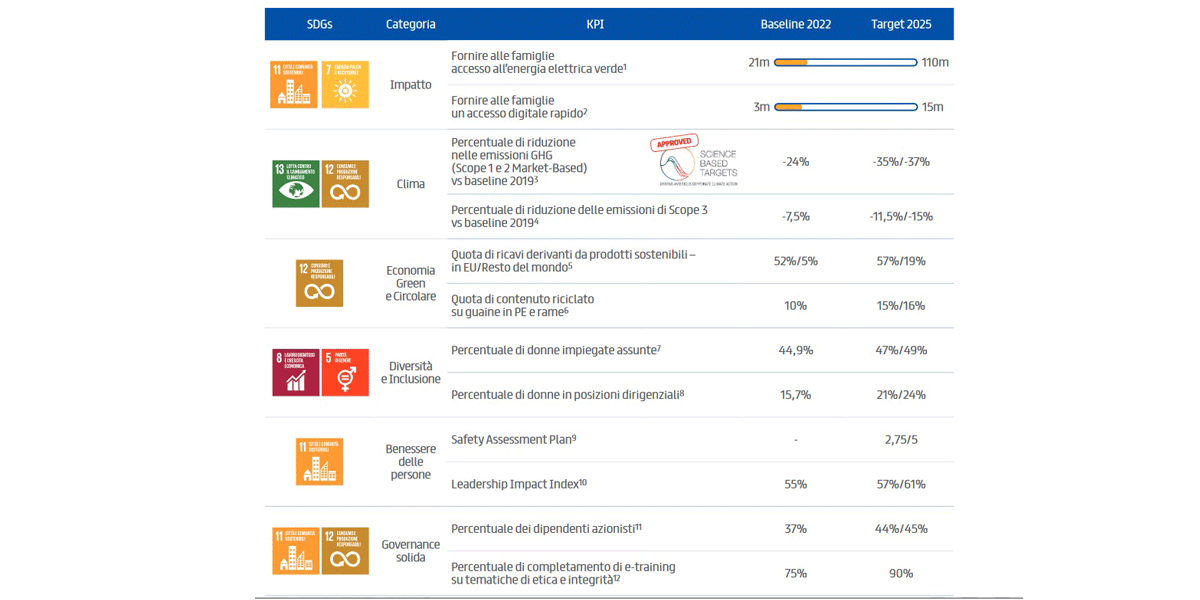KPI: Employee Engagement Index (EI)7
Baseline 2019: EI: 65%
2020: EI: 65%
2021: 60%
2022: 61%
Taget 2022: EI: 67% to 70%
KPI: Leadership Impact Index (LI)7
Baseline 2019: LI: 57%
2020: LI: 57%
2021: LI: 54%
2021: LI: 55%
Taget 2022: LI: 59% to 65%
KPI: Average hours of training per employee each year8
Baseline 2019: 26 hours
2020: 18 hours
2021: 18 hours
2022: 29 hours
Taget 2022: 30 hours
7. The Engagement Index is considered a result greater than or equal to 5 — on a scale from 1 (low) to 7 (high) — on two questions of a survey that measures employee engagement; the Leadership Impact Index is considered a result greater than or equal to 5 — on a scale from 1 (low) to 7 (high) — on five questions of a survey that measures employee engagement. The indices were developed in collaboration with SDA Bocconi.
8. Training hours include both local training and the Academy.





